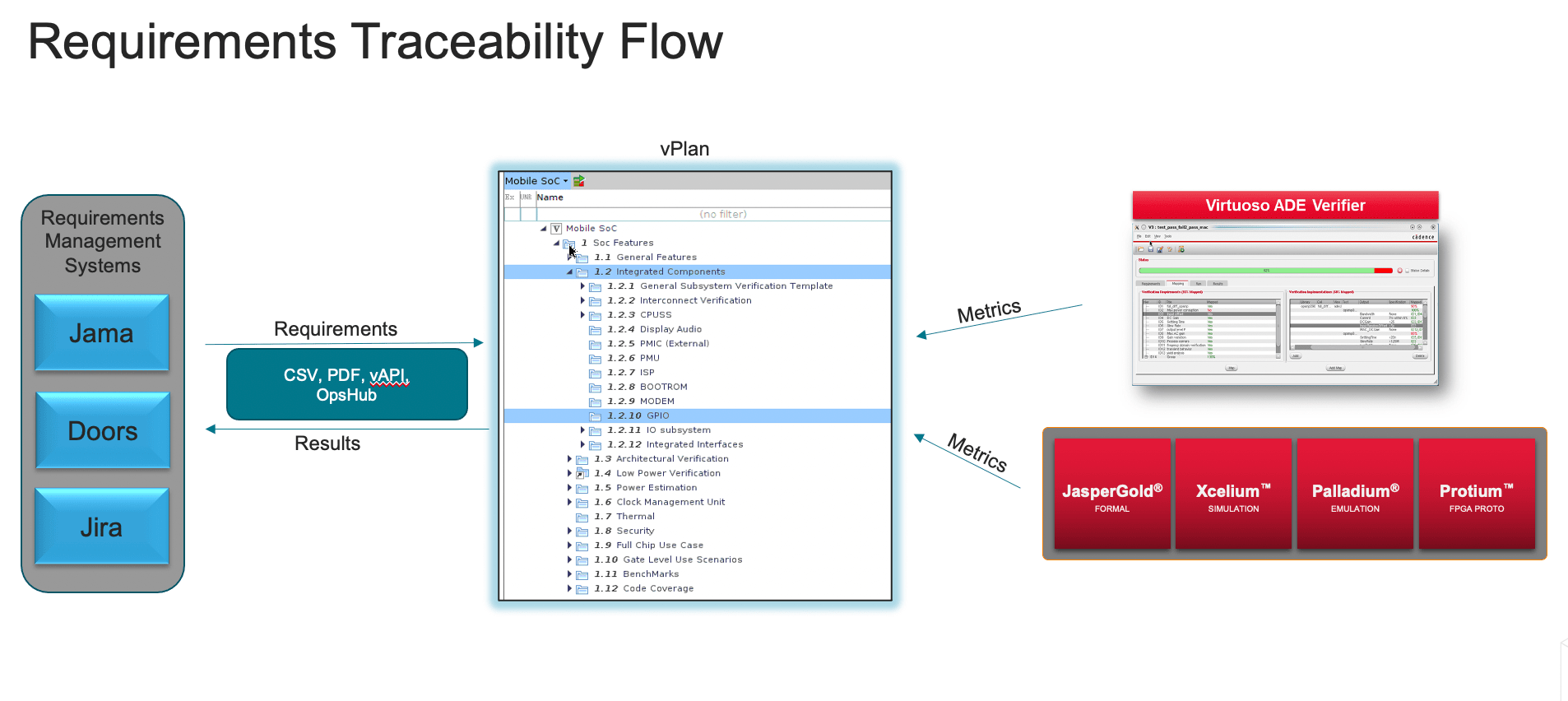While systems design underpins the explosion in “smart everything”, it remains somewhat isolated from another explosion—the proliferation of tools for application lifecycle management (ALM). ALM tools are prevalent on the web, in the cloud and on our phones, to streamline product design and build, to track correspondence between requirements and design/test, customer relationship management and much more. Collectively this market is already well over $50B annually and growing fast because it centralizes and automates what matters to a business. Technology enterprises are already active in using these tools in program and requirements management. Software enterprises are now connecting these important applications to development and engineering operations (DevOps). Semiconductor enterprises are also starting to leverage this DevOps connection, thanks to an important boost from Cadence.

Why do we need this? First, to manage traceability
This all sounds like general goodness, but no one is going change the way they work for a nice-to-have capability. What is now motivating a switch, according to Matt Graham, product engineering director at Cadence, is increasing challenges in supporting traceability. You probably know of this expectation from ISO 26262 and other standards for mission-critical domains. Being able to trace from a requirement to design implementation and to the testing, which demonstrates correctness per the requirement.
The default way to handle this objective is through a requirements traceability matrix (RTM), typically a spreadsheet which correlates between multiple documents, such as a technical requirements doc and perhaps a business requirements doc. Connecting to an implementation plan and most importantly here, a test plan, both with status details. This exercise ensures that everything defined in requirements is implemented and tested. If the link is bidirectional, you can also verify that nothing has been added in implementation and test that wasn’t required.
This method is labor-intensive and error-prone. It obviously doesn’t scale well as more items are added, and it doesn’t age well. As a design progresses through late-stage changes and into derivatives, RTM accuracy deteriorates quickly. Also RTMs undermine agility. Sprints and iterative regressions all screech to a halt on manual matrix updates.
Connecting traceability to the verification plan
There’s no doubt that teams have built a lot of scriptware to automate parts of this update, but that path, too, has limitations. Which requirements management system(s) should you support—Doors, Jama, Jira? And which do your partners and customers support? A standard like ReqIF can help but that is mostly used for the unidirectional exchange between partners, making it difficult to leverage this path to add in-house value.
Cadence and OpsHub have partnered for several years now to build connections between the vManager Verification Management platform to meet objectives like requirements management. Objectives typically managed outside the immediate verification domain. Matt told me that about 18 months ago, this activity around traceability really picked up. (And he noticed more activity around bug tracking and revision control). The need to plug into industry-leading DevOps platforms and enabling bi-directional communication proved the value of this partnership. Stakeholders get timely information and updates, each in the tools and formats they want to see. Automation ensures there are no limits on scalability, granularity or currency of data.
OpsHub has been supporting software DevOps teams for many years, including several big banks and financial institutions. Jama Software is a partner and counts an impressive roster of semiconductor companies among their clients. Especially for requirements change management and reviews.
A big step along a longer road
This linkage can only benefit semiconductor development teams, their program management teams and their customers. By offering better support for all stakeholders through improved tie-offs between input requirements, status and delivery. Next, there are plenty more connections to make. OpsHub currently supports many other platforms including Atlassian Jira, Jama Connect, IBM Doors, Azure DevOps, Salesforce, PTC and multiple Broadcom products. I can’t wait to see what other enterprise-level functions start connecting to design.
You can learn more about OpsHub’s support for vManager HERE. You can learn more about vManager HERE.
Also Read
Keynote from Google at CadenceLIVE Americas 2021
Cadence adds a new Fast SPICE Circuit Simulator
Fuzzing to Validate SoC Security. Innovation in Verification
Share this post via:





Comments
There are no comments yet.
You must register or log in to view/post comments.